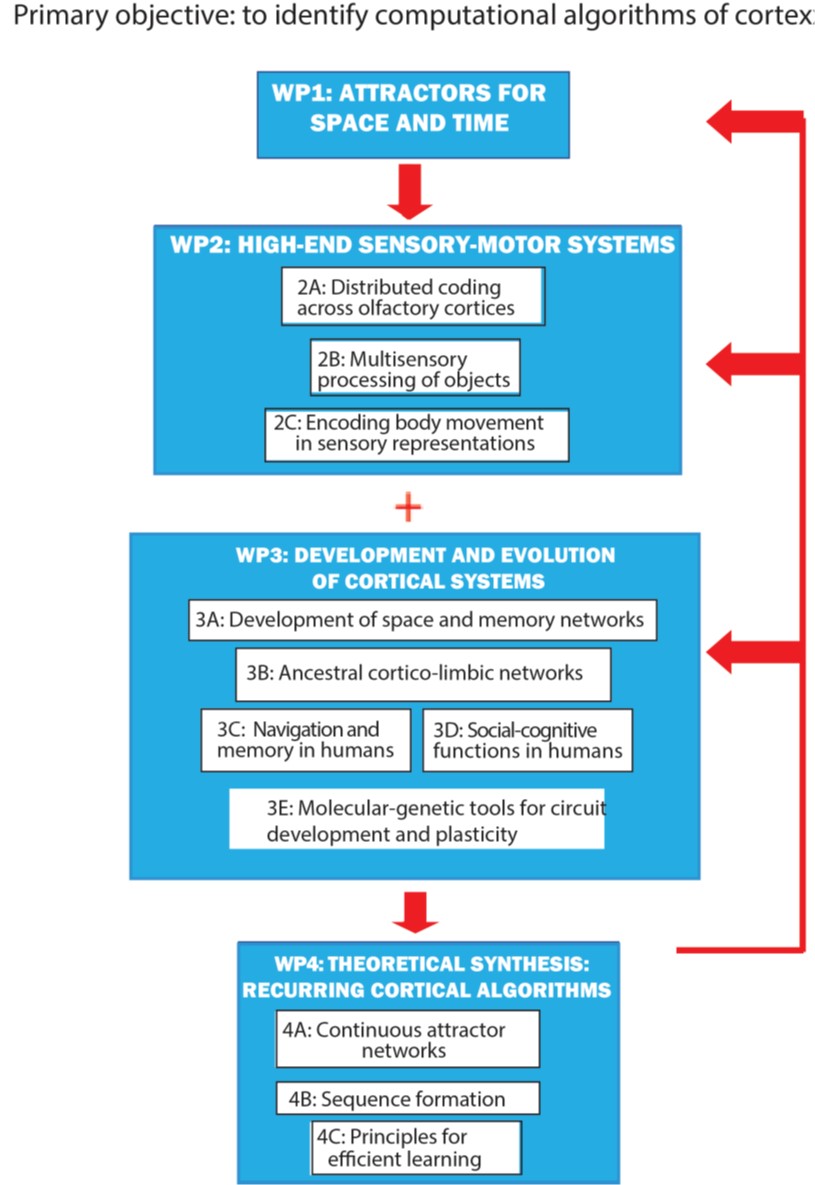WP3B: Ancestral corticolimbic circuits - The Kavli Institute for Systems Neuroscience
WP3B: Ancestral corticolimbic circuits
About
Motivation
Investigating the interactive dynamics of dispersed cortical systems (P4) is a major technical challenge in mammals due to the large size of the brain. The ancestral corticolimbic structures of the zebrafish provide a feasible system to study neural dynamics across the entire brain (P1,3; Sec.8b; ref 1,2,3,9 Yaksi CV).
Aims
We will analyse neural dynamics and connectivity during sensory integration and learning across the zebrafish forebrain, which is homologous to the mammalian cortex.
Specifically, we will:
- 3.4 Investigate how attractor dynamics shape the activity of the entire zebrafish forebrain, and how these dynamics are altered by the animal´s sensory experience, learning and development (P1, P3);
- 3.5 Determine how sensory experience and learning trigger persistent activity and the sequential activation of neuronal ensembles, and the role of such neural sequences in working memory (P2, P3);
- 3.6 Determine the evolutionarily conserved (or diverged) neural circuit connectivity motifs and architectures underlying the coordination of attractor dynamics and neural sequences (P3, P4).
Implementation
Using 2P calcium imaging, we will measure 1000s of neurons across the entire forebrain of awake behaving head-fixed juvenile zebrafish. Through direct comparison to rodents (WP1,2), we will ask how the dynamics is modulated by internal state during sensory experience, learning and development (P3). We will identify the composition of circuits for coordination of attractors and sequences (P1,2,4) by combining molecular, electrophysiological and optogenetic circuit mapping, confirm the computationally inferred architectures (WP4BC), and finally, with MW, TNS and MZ, relate them to architecture of the mammalian cortical systems.
Principal Investigator

